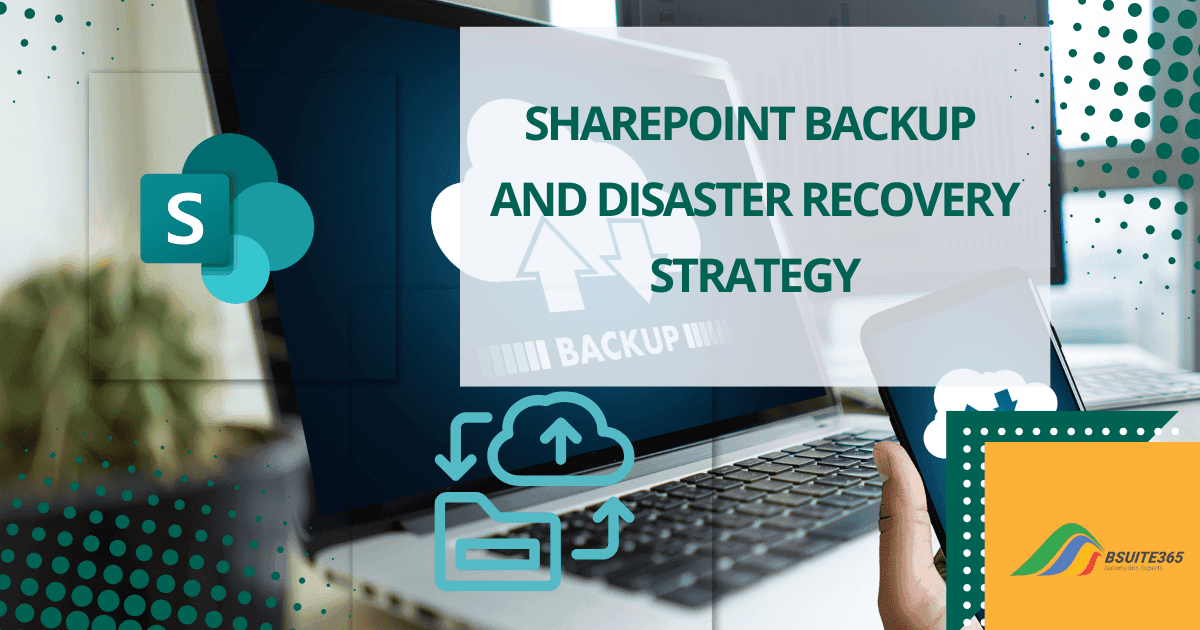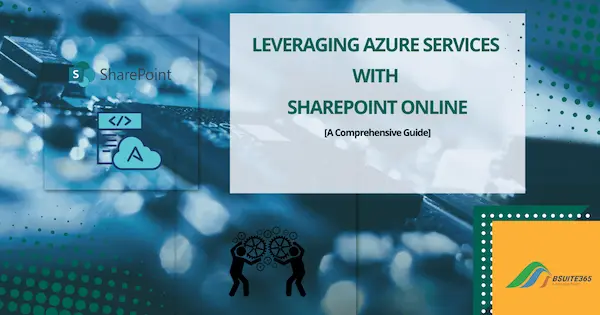Common SharePoint Security Mistakes and How to Avoid Them
- Granting Permissions Directly to Users
- Overly Broad Access Rights
- Ignoring Patch Management
- Weak Account Management
- Improper Data Management
- Not Encrypting SQL Databases
- Lack of Security Training
- Disabling External Sharing Without Alternatives
- Breaking Permission Inheritance Excessively
- Poor Monitoring and Auditing
- Conclusion
Microsoft SharePoint has become an integral part of the modern workplace. Its extensive features—including document libraries, list-based workflows, and integrated communication tools—enable employees to work more effectively, regardless of where they are located.
Yet, the convenience and accessibility of SharePoint bring about a significant responsibility. The platform often holds some of an organization’s most critical and sensitive data, making it a likely target for cyber threats. Understanding the common security challenges associated with SharePoint and implementing effective strategies to mitigate these risks is crucial for organizations aiming to optimize the benefits of SharePoint while ensuring their data remains secure.
Here is the list of mistakes, their consequences, and our suggestion to avoid them:
Granting Permissions Directly to Users
It’s tempting to give out access permissions individually, but this can become unmanageable quickly.
Why It’s a Problem:
- Complexity Creeps Up: When everyone has different access levels, it’s tough to keep track of who can do what.
- More Mistakes: Missed updates and leftover access for people who’ve moved on are more likely to happen.
A Better Way:
- Use Role-Based Access Control (RBAC): Organize permissions into roles like “Contributors,” “Viewers,” and “Approvers” within SharePoint. RBAC is a security model that assigns permissions to users based on their role in the organization
- Group Your Users: By assigning users to these groups, you make managing permissions easier and clearer. Plus, it’s great for keeping a neat audit trail.
Overly Broad Access Rights
Sometimes, we may inadvertently grant users more access than they really need.
Why It’s Risky:
- Access to Sensitive Data: Too much access can mean people see things not intended for their access level, risking your data’s safety.
- Increased Breach Risk: The more people who can get in, the easier it is for the wrong ones to sneak through.
Smarter Approach:
- Principle of Least Privilege: Only give enough access to get the job done—nothing more.
- Regular Check-Ups: Periodically review who can do what to make sure no one has more access than necessary.
- Adjust as Needed: Quickly fix any permissions that are too loose to keep everything tight and right.
To further safeguard your SharePoint environment, it’s essential to implement comprehensive data protection strategies. Explore our detailed guide on SharePoint Data Protection to learn best practices.
Ignoring Patch Management
Sometimes we put off updating our systems and applying patches.
Why This Matters:
- Vulnerabilities Stay Open: Not patching means you’re leaving the door wide open for attackers who know exactly which security flaws to exploit.
- Higher Risk of Attacks: Older, unpatched software is a magnet for automated threats and bad actors.
How to Fix It:
- Set a Patching Routine: Establish a regular schedule to check for, test, and install updates for SharePoint.
- Install Updates Promptly: Plan for any necessary downtime to get those critical patches in place without delay.
- Keep an Eye Out: Always monitor Microsoft’s patch releases and stay aware of urgent security updates.
Weak Account Management
Relying on weak or common passwords and neglecting multi-factor authentication (MFA) can lead to serious security risks.
The Consequences:
- Easier Unauthorized Access: Simple passwords can be guessed or cracked, opening the door to sensitive areas.
- Phishing Triumphs: Without MFA, once credentials are compromised, misuse can occur immediately.
Better Practices:
- Toughen Up Passwords: Set rules for stronger passwords that require a mix of characters and consider changing them regularly.
- Add a Security Layer: Make MFA a must to add an extra hurdle for anyone trying to get in without permission.
- Educate Your Team: Help everyone recognize phishing tricks and promote good password habits.
Improper Data Management
Failing to classify data correctly or implement proper protections can lead to significant risks.
Possible Pitfalls:
- Accidental Data Leaks: If data isn’t clearly labeled, it’s easy for staff to mistakenly share sensitive information.
- Compliance Hurdles: Failing to handle sensitive data according to regulations can result in hefty fines and legal troubles.
Smart Fixes:
- Set Up DLP Measures: Utilize SharePoint’s data loss prevention capabilities (or consider third-party tools) to detect and safeguard sensitive data against unauthorized access.
- Label Data by Sensitivity: Define clear categories like public, internal, and confidential, and ensure documents are properly labelled to match access needs.
- Educate Your Team: Train employees on how to handle data responsibly, focusing on the importance of classifying information and sharing it securely.
Not Encrypting SQL Databases
Failing to encrypt data stored in SharePoint’s SQL databases can create significant security vulnerabilities.
Why It’s Risky:
- Exposure to Data Theft: Unencrypted databases are vulnerable to SQL injection attacks, which may expose sensitive data.
- Compliance Issues: Many regulations mandate encryption for stored data. Ignoring this can result in fines and legal issues.
How to Fix It:
- Activate Database Encryption: Use solutions like Transparent Data Encryption (TDE) or column-level encryption to shield your data.
- Manage Encryption Keys Carefully: Ensure that keys are stored securely and handled only by authorized staff to maintain data confidentiality.
- Conduct Regular Security Checks: Regularly audit your encryption practices and database security to identify and address any weaknesses.
Lack of Security Training
Not providing enough training on SharePoint security best practices, can create harm.
The Consequences:
- More User Mistakes: Employees who aren’t up-to-speed on security can easily slip up, leading to data leaks or other security lapses.
- Increased Breach Risk: Just one mishandled file or ill-considered click could endanger the entire SharePoint setup.
How to Improve:
- Implement Regular Training: Hold sessions that cover everything from strong passwords to spotting phishing attempts, along with proper ways to handle data.
- Customize Training by Role: Offer specific guidance, that aligns with the unique security needs of different roles within the organization.
- Keep the Conversation Going: Use newsletters, reminders, or webinars to continuously update staff on new threats and reinforce security best practices.
Disabling External Sharing Without Alternatives
Shutting off SharePoint’s external sharing features without offering secure alternatives may be harmful.
Potential Issues:
- Rise of Shadow IT: Without approved ways to share externally, users might default to personal emails or unapproved file-sharing apps, risking data exposure.
- Lost Oversight: Sharing outside approved channels means you can’t see or control where your data ends up.
Better Approach:
- Adjust Sharing Settings: Fine-tune SharePoint to allow secure external sharing, such as requiring sign-ins, restricting sharing to certain domains, or using expiring links with passwords.
- Educate Your Team: Teach employees the right ways to share files externally and emphasize the importance of following company guidelines.
- Keep a Watchful Eye: Regularly check who’s sharing what, review logs, and tweak settings as needed to ensure everything stays in check.
Breaking Permission Inheritance Excessively
Breaking permission inheritance excessively without secure alternatives may cause difficulties.
Potential Problems:
- Rise of Shadow IT: In the absence of sanctioned sharing methods, users might turn to personal emails or third-party apps, increasing the risk of data leaks.
- Lost Oversight: Without official channels, you lose visibility and control over where and how data is shared.
Smarter Strategy:
- Fine-Tune Sharing Settings: Modify SharePoint to enable safer external sharing options like mandatory sign-ins, domain-specific sharing, or links that expire and require passwords.
- Educate Your Team: Provide training on secure document-sharing practices and stress the importance of adhering to organizational policies.
- Maintain Vigilance: Regularly monitor external sharing activities, audit logs, and adjust permissions to keep your data secure and under control.
Poor Monitoring and Auditing
Not keeping a close eye on user activities or reviewing audit logs regularly can cause problems.
The Risks:
- Delayed Detection: If you’re not monitoring continuously, you might miss early signs of suspicious behavior, allowing issues to escalate.
- Limited Forensic Capabilities: Without detailed logs, it’s tough to analyze and respond effectively to security incidents.
How to Improve:
- Implement Regular Monitoring: Use SharePoint’s built-in audit features or third-party tools to keep tabs on user actions, like file access and permission changes.
- Set Up Alerts: Configure notifications for critical operations or violations, ensuring quick attention to unusual activities.
- Regular Reviews: Make it routine to check audit logs and reports to spot and address any unusual patterns or risks promptly.
- Evolve Continuously: Use audit insights to constantly refine security measures, permissions, and training programs.
Conclusion
Securing a SharePoint environment is crucial and requires proactive measures, thorough oversight, and a dedication to continual enhancement. By steering clear of common mistakes—such as assigning permissions individually, granting access too broadly, ignoring timely updates, and neglecting thorough audits—organizations can significantly lower their risk of data breaches and compliance issues.
Some key strategies include:
- Educating Users: Ensuring that all team members understand best security practices.
- Protecting Sensitive Data: Properly classifying and securing important information.
Managing External Sharing: Ensuring that any data shared outside the organization is done securely and within a controlled framework.
Our experts will be glad to help you, If this article didn’t answer your questions. ASK NOW
We believe this content can enhance our services. Yet, it’s awaiting comprehensive review. Your suggestions for improvement are invaluable. Kindly report any issue or suggestion using the “Report an issue” button below. We value your input.


